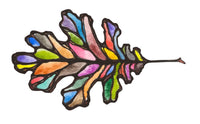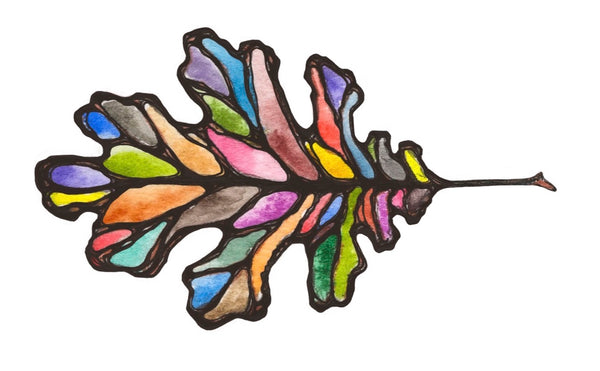
Creating A Color Wheel With Colors From Your Palette
You might be surprised at how many artists truly believe that if they have three primary colors they can mix literally ANY other color.
Color theory is wonderfully useful - but it's better to think of it more in terms of a philosophy. Philosophies can give tremendous insight and help us to understand the world in new ways. However, as ideas they exist in a kind of bubble, and have trouble withstanding the chaos of reality when applied without adjusted expectations.
This is true of color theory. It is so important for your painting practice to understand a little color theory, but when the rubber meets the road and it is time to sit down and paint, it is even more important to understand how the colors in your particular palette will behave.

Example of digital classic concept color wheel featuring Primaries, Secondaries, and Intermediates.
Image by Peter Hermes Furian

Example of classic hand-painted color wheel featuring watercolors.
By Johann Wolfgang von Goethe
It is true that in theory Blue and Red make purple, but when it comes to physical paints and pigments (as opposed to general color representations generated by a computer), there is a shocking variety of different Reds and Blues (beyond Magenta and Cyan, the cleanest primary colors). They can be warm, cool, high-chroma, earthy, light, dark, etc. Think about the differences between Ultramarine, Cobalt, Cerulean, Phthalo, Indanthrone, Vivianite, and Manganese Blues. You will get very different results when you begin mixing them with Alizarins, Cadmiums, Anthraquinones, Pyrrols, Quinacridones, Ochres, and Earths in hopes of creating Purple.
It is important to remember that color mixing isn't magic (although it can often seem like it!). Mixed colors are merely the sum of their parts. And to believe you'll be able to mix a lovely high-chroma violet with an Indanthrone Blue and a Cadmium Red because they are "primary colors" will only result in frustration.
Color Theory is a great starting point, but you'll need to explore your paint set to understand the full array of color options available to you.
In this post I will walk you through creating color wheels for the colors in your palette.

A color wheel painted using the colors in the G&B Sequel Set + Limited Edition Limonite
Creating A Color Wheel From Colors In Your Palette
1) Identify your primary colors
Gather your Reds, Yellows, and Blues and separate them into those color categories.

The colors from my palette grouped into primary color categories: Red, Yellow, and Blue.
2) Organize Your Primaries Into Different Groups (if you have more than one set of primaries)
There are many different ways to organize types of colors (i.e. by the appearance of the hue: high-chroma, ochre, Mayan, mineral, opaque/pastel, or by characteristic: granulation, tinting-strength, value range etc.). If you have more than one set of primary colors in your palette, try to break them up into "like" groupings.

Of the primary colors in my palette, I used two groups of primary colors. On the left I have Mayan Red, Mayan Yellow, and Mayan Violet. On the right I have Red Ochre, Yellow Ochre, and Vivianite (Blue Ochre).
3) Create a 6-Color Wheel
Either use a ruler and compass to create a wheel broken up into six areas, or use the free file on this post (image below, just right-click, save, and print!). Whichever route you choose, make sure you use a quality watercolor paper.
If drawing: Make sure to use light pencil or a waterproof permanent pen or marker (such as a Sakura Identipen) so that your lines won't bleed when you begin painting.
If printing: You will want to limit your paper weight to 90 lb watercolor paper because anything thicker won't go through most printers. Also make sure to print on the black-and-white setting so the ink won't run.

Use this image to print and paint your own color wheels!
(Use the faint grey line down the center as a tear guide.)
For personal use only!
4) Paint Your Primaries
Now that you have your blank color wheel prepared, begin by painting your primary colors onto your wheel, leaving one area blank between each color.

Painting Mayan Violet as the "Blue" on my color wheel. (Adventure Set pictured in background.)

Waiting for my colors to dry before moving onto the next step!
5) Start Mixing!
Once your primary colors have been painted and have dried, it's time to start mixing. Use a mixing palette or the lid of your paint tin to create color mixtures (or secondary colors) using two primary colors at a time. (Three will result in a brown!)
"Red" + "Yellow" = "Orange"
"Yellow" + "Blue" = "Green"
"Blue" + "Red" = "Purple"

6) Comparing Color Wheels
Now it's time to compare your color wheel(s) to other color wheels and take note of the differences. You will already have noticed the multitude of different primary color varieties. With so many different primary color options, their combinations result in an even greater variety of secondary colors. This project will reveal color wheels that are unique to your palette.

Top Left: Generalized Digital Color Wheel, Top Right: Goethe's Painted Color Wheel, Bottom Left: Painted Color Wheel Using G&B Primary Ochre Colors, Bottom Right: Painted Color Wheel Using G&B Primary Mayan Colors
Takeaway
Color Theory is all well and good as a starting point, but your color palette will yield a particular set of color mixing options. Understanding what colors are available at the tip of your brush will give you greater freedom and ease when painting.
Have you stuck with me to the end? Here's a little bonus: a color wheel worksheet customized for your palette. These cut-outs are sized for our medium-sized tins, but being small and portable, can easily be incorporated into any kit. These small customizable color wheels make a wonderful handy reference tool.
Each wheel can be painted with a different variation of primary color groupings. You can take these a step further by creating wheels for your secondary and tertiary colors. (Now that is geeking out!) Just cut along the dotted lines to separate your wheels!

Save this worksheet to print out onto watercolor paper and create travel color wheel reference tools customized for your palette! (For personal use only, please!)
I hope you found this information and project useful! It's one of my very favorite things to do to get to know a new set of colors.
As always, thank you so much for taking the time to be here and...
Wishing You Happy Painting!


